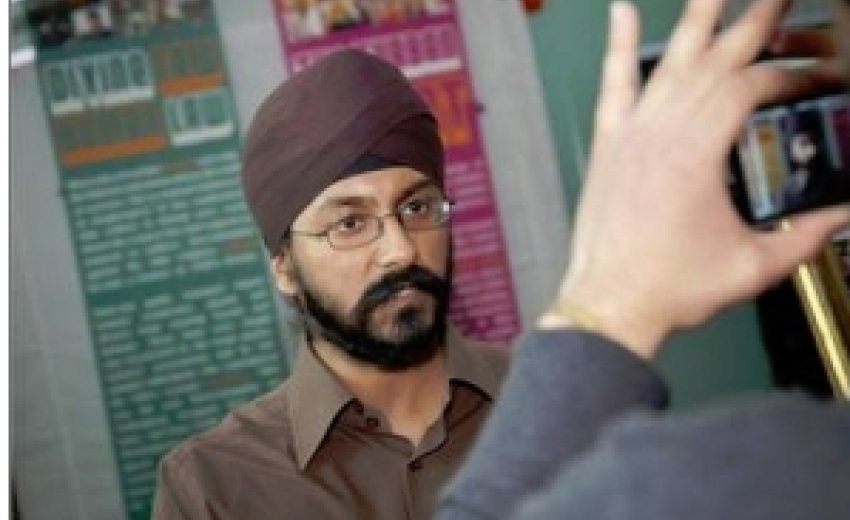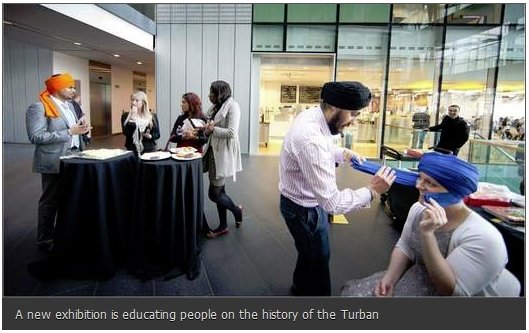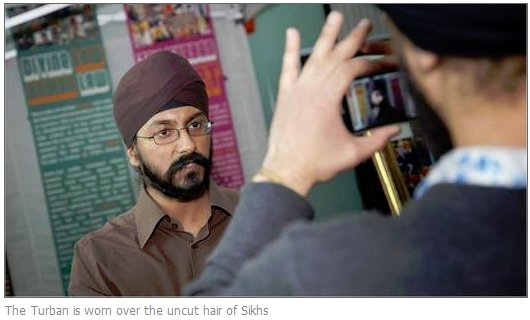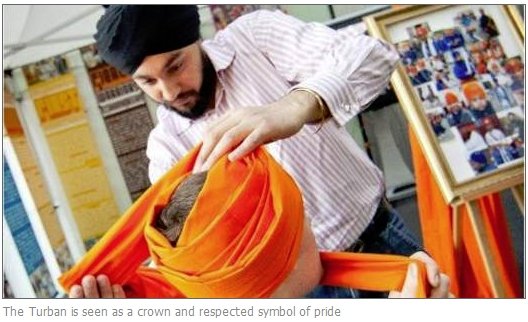|
Sikhs are sometimes mistaken for Muslims and targeted by anti-Islam activists, writes Sky News producer Jay Singh-Sohal.
A leading Sikh-American civil rights group says it suspects a gunman who shot dead six people at a Sikh place of worship had mistakenly targeted members of the faith. Michael Page, 40, who had links to white supremacist groups, was shot dead by police during the rampage in Milwaukee, Wisconsin. The Sikh Coalition believes the atrocity is the worst scenario in an increasing trend of race-related attacks against Sikhs. In the US, they have sometimes been confused with Muslims and targeted by anti-Islam activists, particularly after the September 11, attacks in 2001. Simran Kaur, advocacy manager for the rights group, said that since the attacks there have been thousands of reports from Sikhs about hate crimes, workplace discrimination, school bullying and religious profiling. Such acts are taking place right across the States - in February this year a Gurdwara (place of worship) was desecrated in Sterling Heights, Michigan.
In March 2011, two elderly Sikhs were murdered while out walking in hate attacks which shocked the diverse community in Elk Grove, California. It is a trend which began just days after the attacks on the World Trade Centre. In Mesa, Arizona, Balbir Singh Sodhi was mistaken for a jihadist because of his Turban and beard and shot dead outside his petrol station. His murderer, Frank Silva Roque, told police he was a patriot and boasted about the death. For Sikhs, religious identity is based upon the principle of men and women being recognisable with uncut hair, including a beard for men, and a Turban. While unshorn hair is one of the 5 K's - religious items every initiated Sikh wears at all times - the Turban is considered a crown and respected as a symbol of pride and independence for a faith that has faced many struggles to survive. The prescription was given by the tenth Sikh Guru Gobind Singh in the late 17th Century to ensure Sikhs always stood out in a crowd, and could not hide when faced with adversity, such as religious persecution during the Mughal regime in India at the time.
The same could be said for post 9/11 America; some Sikhs believe this outward display of faith might very well be what led the gunman to target the Gurdwara, although the FBI are currently investigating the motivation for the attack. New York City cartoonist Vishavjit Singh depicts the difficulties Sikhs face in his 'Sikhtoons' images and said: "As a Sikh American this is an unfortunate and violent manifestation of a reality many Sikhs live on a daily basis in the United States. "America is a land of acceptance at large but there is an underlying level of bigotry, ignorance and hate that bubbles up time and again on our streets." But where does this come from? The Turban is sometimes seen worn by Islamists for cultural reasons different to Sikhs. From the Iranian Ayatollah to Osama bin Laden and the Taliban, it has meant the Turban has become associated with fear and terror. This is a fact given backing in a psychological experiment undertaken by researchers in 2008 that found people subconsciously had a heightened sense of threat when seeing someone with a Turban - regardless of whether they are Sikh or not. They called this the 'Turban effect'. In the UK, the Arts Council-funded project Turbanology has worked to demystify the Turban through art, film and Turban tying workshops. The project’s curator, Simon Redgrave, said: "A tragedy like this is unfortunately what some contributors to our art project had feared might happen. "Despite the Sikhs' unique visibility and their contributions as a community, Sikh identity is often more misunderstood today than fifty years ago." In the coming days and weeks a picture will emerge of what motivated the gunman to go on a rampage against a community he might have mistaken for another. While no faith group or community should suffer this ordeal, some Sikhs in the US already feel their efforts to live the American dream is at threat from mistaken identity. :: Jay is a Sky News producer, turban-wearing Sikh, and director of the Turbanology exhibition. |




